Exploring the Unique Qualities of Eastern Red Cedar
What Is The Difference Between Eastern Red Cedar And Western Red Cedar?
Eastern Red Cedar
Embark on a captivating journey exploring “difference between eastern red cedar and western red cedar?”. Although they share a common name, these remarkable species boast unique benefits and attributes, charming not only gardeners but also woodworkers and nature lovers. In this article, we will dive deep into the fascinating realms of these incredible trees, examining their distinct appearances, natural habitats, applications, and more. Accompany us as we uncover the mysteries of Eastern Red Cedar and Western Red Cedar, and determine the perfect choice for your garden!
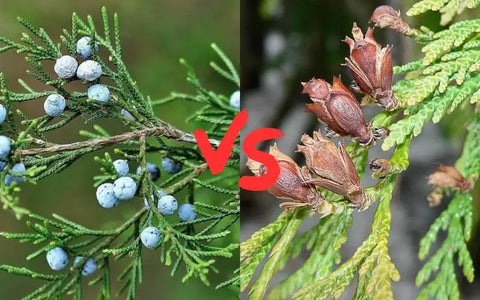
What is the difference between Eastern Red Cedar and Western Red Cedar?
1. What is the difference between Eastern Red Cedar and Western Red Cedar
1.1 Characteristics
1.2 Habitat
1.3 Benefits
1.4 Uses
2. Should you choose Eastern Red Cedar or Western Red Cedar to grow?
2.1 Climate and location
2.2 Space availability
2.3 Seed availability
2.4 Purpose
2.5 Maintenance
3. Conclusion
1. What is the difference between Eastern Red Cedar and Western Red Cedar?
These two cedar plants have many similarities and differences regarding external characteristics, habitat, uses, benefits, etc. Here is a detailed comparison of them.
1.1 Characteristics
Eastern Red Cedar is an evergreen tree in the family Cupressaceae but is actually a juniper species. It has scaly leaves and red and thin outer bark and is usually 30-40 feet (9-12 meters) tall. In particular, it produces thin, fruit-like green cones that attract birds and other animals to eat.
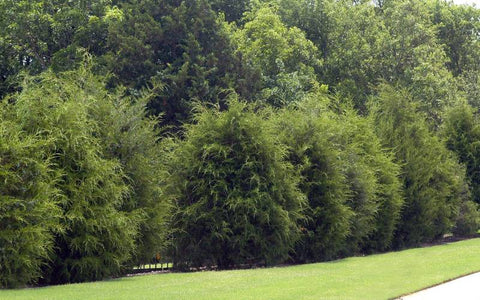
Meanwhile, Western Red Cedar also belongs to the family Cupressaceae but is a true cedar tree. It has flat, scale-like leaves and reddish-brown bark and can grow to 200 feet (60 meters) tall in favorable habitat. Its height allows you to easily distinguish it from the Eastern cedar.
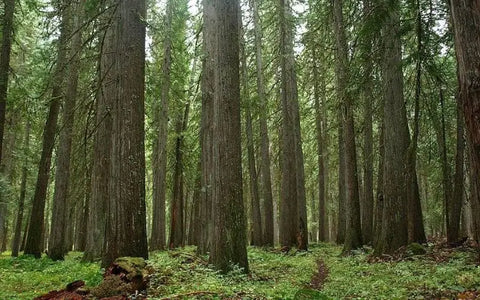
1.2 Habitat
The Eastern Red Cedar can be found in various habitats, most notably in the eastern and central United States. These cedars are often found in meadows, grasslands, open forests, or households gardens. They can live on various soil and moisture levels because of their adaptability.
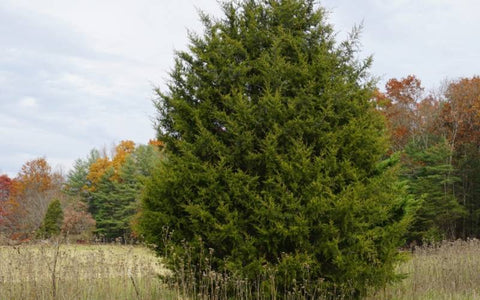
To find Western cedars, you must go to the Pacific Northwest of the United States or Western Canada. They prefer moist, well-drained soil and cool climates. Therefore, you can easily see them in coastal forests, swamps, or along riverbanks.
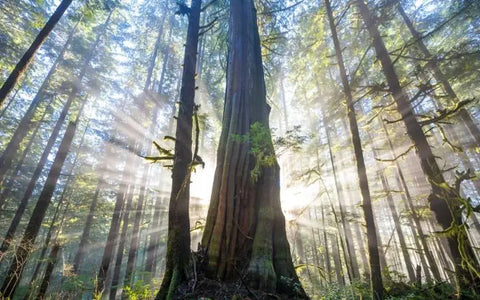
1.3 Benefits
Both species of cedar trees play essential roles in nature. The Red Cedar Juniper has dense foliage that shelters birds and mammals. Furthermore, its thin fruit-like cones are food for many animals. The roots of these cedars also help stabilize the soil and reduce erosion.
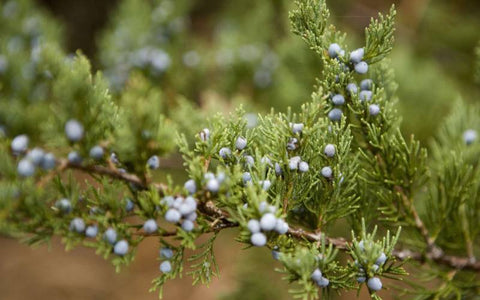
Western cedars are no less competitive. They provide habitat and food for many animals, such as squirrels, birds, and deer. In particular, their dense foliage and large cavities are suitable for small creatures to nest. Their large trunks and deep-rooted roots also play an essential role in stabilizing the soil and maintaining a healthy forest ecosystem.
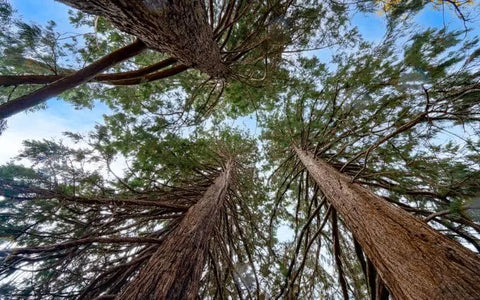
1.4 Uses
People often think less about the uses of big cedar trees, but they can be applied in many fields.
For example, Eastern Red Cedar gives the wood a beautiful reddish brown color that is fragrant and resistant to decay. This makes it popular for fence posts, outdoor furniture, and various woodworking projects. You can use the stem of this cedar to make a chest and a wardrobe. Moreover, essential oils from red cedar wood are used for aromatic and medicinal purposes. Check more of its uses out here!
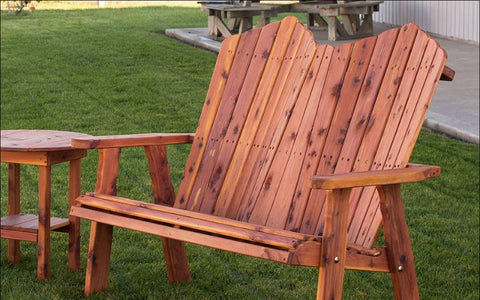
Meanwhile, the Western Red Cedar has a tall body ideal for roofing, siding, and other outdoor structures. Indigenous people also use large cedar tree trunks to build canoes, house poles, and many other projects.
Common uses of Western Red Cedar include boat-building, crates, decking, musical instruments, and numerous outdoor structures
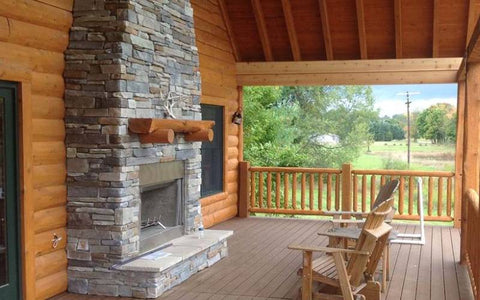
2. Should you choose Eastern Red Cedar or Western Red Cedar to grow?
As you know, these plants have many benefits and uses. Choosing which of them to plant depends on your needs and conditions. Consider the following factors:
2.1 Climate and location
When selecting the right tree for your garden, consider your geographic location and the prevailing climate. Eastern Red Cedar is better suited for the eastern and central United States. Meanwhile, Western Red Cedar is ideal for those in the Pacific Northwest or western Canada, as it thrives in its cool, wet climate.
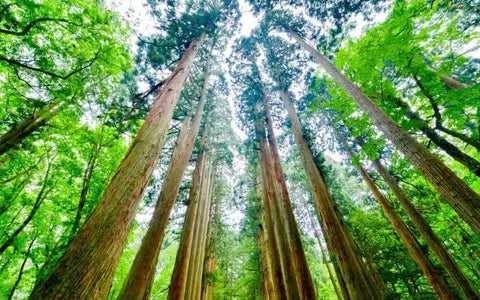
Western Red Cedar has low density and is lightweight, making it easy to work with hand and/or power tools.
Western Red Cedar is found across southern Alaska, northern California, and throughout the Rocky Mountains.
2.2 Space availability
The size of your garden is another crucial factor in determining the right tree. Eastern Cedar, with its typical height of 30-40 feet (9-12 meters), is an excellent choice for smaller gardens. In contrast, Western Red Cedar can reach up to 200 feet (60 meters) and requires more space, making it less suitable for compact gardens.
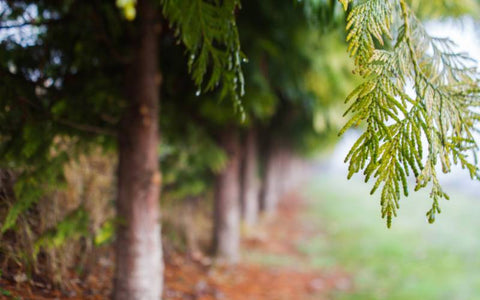
2.3 Seed availability
When it comes to growing trees at home, Eastern and Western Red Cedar seeds are both accessible options that can add charm and beauty to your garden.
Eastern Red Cedar trees are known for their blue, berry-like cones filled with numerous seeds, which serve as a crucial food source for birds and other wildlife. This not only helps with the tree's natural dispersal but also makes it easy for gardening enthusiasts to obtain seeds. You can follow guides on germinating Eastern Red Cedar seeds here if deciding to grow them.
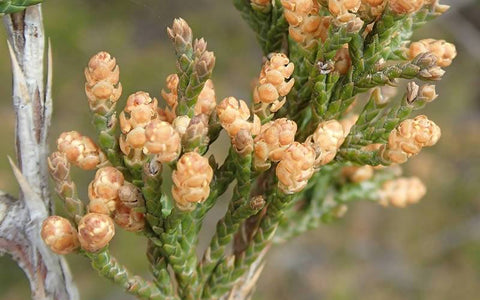
Similarly, Western Red Cedar trees produce small, elongated cones containing seeds that can be readily found. These seeds can also be purchased from local nurseries or online seed suppliers, making them a convenient choice for home gardeners.
2.4 Purpose
Consider the primary goal of planting the tree in your garden. If you seek a windbreak or privacy screen, Eastern Red Cedar's dense foliage, and smaller size make it the superior choice. However, suppose you desire a tall, majestic tree offering shade and boasting cultural or historical significance. In that case, Western Red Cedar is the better option.
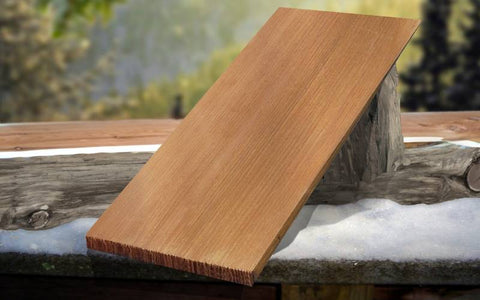
2.5 Maintenance
Although both trees are relatively low-maintenance, Eastern Red Cedar has the edge in adaptability. It can thrive in various soil types and moisture levels, making it a more versatile option for gardens with varying conditions.
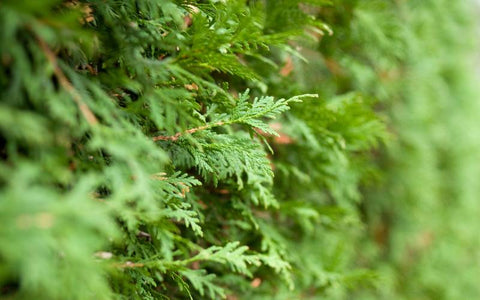
3. Conclusion
So, what is the difference between eastern red cedar and western red cedar? Now you have the answer. These two types of cedar are relatively similar in characteristics, benefits, and uses. However, western plants are generally taller, making them less popular for indoor gardening. In contrast, the smaller Eastern plants are ideal for shading your garden. Shop for cedar tree seeds at TheRike to start your planting plan now.
FAQs About Eastern Red Ceder and Western Red Ceder
1. What are the main differences between Eastern Red Cedar and Western Red Cedar?
Eastern Red Cedar, also known as Juniperus virginiana, is typically found in the eastern United States and is smaller in size, ranging from 16 to 66 feet tall. Western Red Cedar, or Thuja plicata, is native to the Pacific Northwest and can grow up to 230 feet tall. The Western variety is known for its larger size, fewer knots, and straighter grain
2. What are the environmental impacts of using these cedars?
Both types of cedar are sustainable when harvested responsibly. Western Red Cedar is often praised for its long-term environmental benefits and is available with certifications that ensure sustainable logging practices. Eastern Red Cedar is also considered an environmentally friendly option when sourced correctly.
3. How do I care for and maintain cedar wood in my projects?
Cedar wood requires minimal maintenance due to its natural resistance to decay and insects. However, to preserve its appearance, it may be stained or sealed, especially for outdoor applications. Regular cleaning and inspection for signs of wear or damage can help maintain the wood's longevity.
Understanding the Significance of Heartwood in Cedar
Western Red Cedar
The heartwood of Western Red Cedar is highly valued for its natural resistance to decay and insect invasion. This resistance is primarily due to the natural oils and compounds present in the wood, which act as preservatives. Because of these properties, Western Red Cedar's heartwood is an excellent choice for outdoor projects where durability is crucial. Whether used for siding, decking, or fencing, it offers a long-lasting solution that withstands the tests of time and weather.
Eastern Red Cedar
Similarly, the heartwood of Eastern Red Cedar boasts a robust defense against both decay and insect damage. Known for its aromatic properties, this type of cedar is also imbued with natural oils that deter pests and rot. This makes it ideal for not just external applications like outdoor furniture and structures, but also for interior uses such as cedar chests and closets, where its pleasant scent and protective qualities can be fully appreciated.
Key Takeaways
- Durability: Both woods offer long-lasting performance in challenging outdoor environments.
- Natural Resistance: Their innate resistance to decay and insects negates the need for chemical preservatives.
- Versatility: Suitable for a wide range of projects, from outdoor construction to indoor storage solutions.
In summary, the heartwood of both Western and Eastern Red Cedar is integral to their value and popularity in construction and design projects. Their natural durability ensures that structures and products maintain their integrity over time.
When comparing the cost of Western Red Cedar to Eastern Red Cedar, several factors come into play, such as availability and geographic location. Generally speaking, Western Red Cedar tends to carry a slightly higher price tag than Eastern Red Cedar. However, this price gap is often minimal and might not be a deciding factor for many buyers, especially if the aesthetic or functional qualities of the wood take precedence.
Factors Influencing Price:
- Availability: Regions that are closer to the source of either type of cedar might see reduced transportation costs, affecting the final price.
- Quality Grading: Variations in quality grading can also impact prices, as higher-grade lumber typically costs more.
- Market Demand: Prices can fluctuate based on market demand, which can vary seasonally or with changing industry trends.
In summary, while there is a slight cost distinction, it is not substantial, and both types of cedar offer unique benefits that might influence your choice more than the price differential.
Misconceptions About Eastern Red Cedar vs. Eastern White Cedar
There’s plenty of confusion surrounding Eastern Red Cedar and Eastern White Cedar, leading many to mistakenly believe they’re one and the same. However, these two types of cedar have distinct characteristics and uses.
Common Confusion Points:
-
Species Differences
Eastern Red Cedar is often mixed up with Eastern White Cedar. While their names might suggest they belong to the same species, they do not. Eastern Red Cedar isn’t even a true cedar; it's actually a type of juniper, known scientifically as Juniperus virginiana. On the other hand, Eastern White Cedar, or Thuja occidentalis, is a true cedar. -
Physical Characteristics
The visual attributes of these woods also add to the misunderstandings. Eastern White Cedar has a pale white hue and fine, straight grains. This appearance is quite different from Eastern Red Cedar, which typically features reddish to purplish hues and more varied grain patterns. -
Applications and Usage
While both woods are prized for different reasons, their applications sometimes overlap. Eastern White Cedar is favored for projects exposed to the elements, like fencing or decking, because of its impressive resistance to decay and insects. This makes it a popular choice for shingles as well. Eastern Red Cedar, while also used outdoors, is more commonly associated with crafting furniture and lining closets due to its aromatic properties.
By understanding these key differences, buyers and builders alike can make more informed decisions when selecting the right type of cedar for their projects.
2. Should you choose Eastern Red Cedar or Western Red Cedar to grow?
As you know, these plants have many benefits and uses. Choosing which of them to plant depends on your needs and conditions. Consider the following factors:
2.1 Climate and location
When selecting the right tree for your garden, consider your geographic location and the prevailing climate. Eastern Red Cedar is better suited for the eastern and central United States. Meanwhile, Western Red Cedar is ideal for those in the Pacific Northwest or western Canada, as it thrives in its cool, wet climate.
Western Red Cedar has low density and is lightweight, making it easy to work with hand and/or power tools. It's found across southern Alaska, northern California, and throughout the Rocky Mountains.
2.2 Space availability
The size of your garden is another crucial factor in determining the right tree. Eastern Cedar, with its typical height of 30-40 feet (9-12 meters), is an excellent choice for smaller gardens. In contrast, Western Red Cedar can reach up to 200 feet (60 meters) and requires more space, making it less suitable for compact gardens.
2.3 Seed availability
When it comes to growing trees at home, Eastern and Western Red Cedar seeds are both accessible options that can add charm and beauty to your garden.
Eastern Red Cedar trees are known for their blue, berry-like cones filled with numerous seeds, which serve as a crucial food source for birds and other wildlife. This not only helps with the tree's natural dispersal but also makes it easy for gardening enthusiasts to obtain seeds. You can follow guides on germinating Eastern Red Cedar seeds here if deciding to grow them.
Similarly, Western Red Cedar trees produce small, elongated cones containing seeds that can be readily found. These seeds can also be purchased from local nurseries or online seed suppliers, making them a convenient choice for home gardeners.
2.4 Purpose
Consider the primary goal of planting the tree in your garden. If you seek a windbreak or privacy screen, Eastern Red Cedar's dense foliage, and smaller size make it the superior choice. However, suppose you desire a tall, majestic tree offering shade and boasting cultural or historical significance. In that case, Western Red Cedar is the better option.
2.5 Maintenance
Although both trees are relatively low-maintenance, Eastern Red Cedar has the edge in adaptability. It can thrive in various soil types and moisture levels, making it a more versatile option for gardens with varying conditions.
2.6 Appearance
Both Eastern and Western Red Cedars have their unique visual appeal. Western Red Cedar boasts a richer, darker color and a straighter grain, providing a more uniform appearance. In contrast, Eastern Red Cedar has a lighter, more knotty look that many find charming.
2.7 Availability
In terms of procurement, Western Red Cedar is more widely available due to its larger cultivation area. It's grown extensively in many regions, while Eastern Red Cedar is primarily found in the eastern United States, which might make it harder to find in certain areas.
2.8 Price
Lastly, consider the cost. Western Red Cedar tends to be slightly more expensive than Eastern Red Cedar, though the difference isn't significant. Prices can vary based on factors like location and availability, so it's worth checking local suppliers.
Western Red Cedar, or Thuja plicata, is native to the Pacific Northwest and can grow up to 230 feet tall. The Western variety is known for its larger size, fewer knots, and straighter grain. In terms of color, Western Red Cedar boasts a richer, darker hue compared to its counterpart. This darker color is complemented by a uniform appearance due to its straight grain.
In contrast, Eastern Red Cedar often presents a lighter, more knotty appearance that many find charming. This adds a rustic character that appeals to those seeking a more natural look. The differences in grain and color make each type unique, providing distinct aesthetic options depending on your preference.
Both Western Red Cedar and Eastern Red Cedar are renowned for their natural resistance to decay and insects, making them excellent choices for outdoor projects. Their heartwoods are inherently resistant to rot and insect damage, ensuring durability and longevity even in harsh weather conditions.
Western Red Cedar
- Decay Resistance: This cedar type is particularly noted for its ability to resist decay and rot, making it ideal for outdoor use.
- Weather Durability: It withstands environmental challenges effectively, providing long-term protection for structures.
Eastern Red Cedar
- Insect Protection: The heartwood is naturally resistant to insect damage, offering a robust solution for outdoor applications.
- Longevity: Like its western counterpart, it stands up well to the elements, ensuring lasting performance.
Both types of cedar are sustainable when harvested responsibly. Western Red Cedar is often praised for its long-term environmental benefits and is available with certifications that ensure sustainable logging practices. Eastern Red Cedar is also considered an environmentally friendly option when sourced correctly.
This balance of natural resilience and sustainability makes both Western and Eastern Red Cedar compelling choices for environmentally conscious builders and homeowners alike.
Western Red Cedar has a tall body ideal for roofing, siding, and other outdoor structures. Indigenous people also use large cedar tree trunks to build canoes, house poles, and many other projects. Common uses of Western Red Cedar include boat-building, crates, decking, musical instruments, and numerous outdoor structures.
Why Choose Western Red Cedar?
-
Natural Beauty and Rich Color: Known for its rich color and natural beauty, Western Red Cedar is often the material of choice for high-end projects, particularly outdoor furniture and decking. Its aesthetic appeal enhances any environment.
-
Durability and Decay Resistance: Western Red Cedar is naturally resistant to decay and rot, making it an excellent choice for outdoor applications. It withstands harsh weather conditions, ensuring longevity and performance in fences, decks, and siding.
-
Aromatic Qualities: The distinctive aroma of Western Red Cedar is not only pleasant but also functional. It repels moths and insects, making it a popular choice for lining closets and chests to keep clothes and linens fresh.
-
Versatility in Application: Beyond its use in traditional structures, Western Red Cedar shingles are favored for roofing and siding due to their durability and resistance to decay. The heartwood's resistance to insect damage further extends its appeal for outdoor projects.
-
Natural Resistance: The wood's inherent resistance to decay and insects makes it a practical and beautiful option for any style of construction. Whether left untreated or stained, its natural color can be highlighted to suit various design preferences.
By combining these qualities, Western Red Cedar stands out as a versatile, durable, and visually appealing material, ideal for a wide range of applications from architectural projects to decorative uses.
When it comes to growing trees at home, Eastern and Western Red Cedar seeds are both accessible options that can add charm and beauty to your garden.
Eastern Red Cedar trees are known for their blue, berry-like cones filled with numerous seeds, which serve as a crucial food source for birds and other wildlife. This not only helps with the tree's natural dispersal but also makes it easy for gardening enthusiasts to obtain seeds. You can follow guides on germinating Eastern Red Cedar seeds here if deciding to grow them.
Similarly, Western Red Cedar trees produce small, elongated cones containing seeds that can be readily found. These seeds can also be purchased from local nurseries or online seed suppliers, making them a convenient choice for home gardeners.
Availability Comparison:
While both Eastern and Western Red Cedars are popular choices for planting, their availability varies significantly. Western Red Cedar is more widely available due to its cultivation in larger quantities and across more locations. This extensive distribution makes it easier to find in various regions.
On the other hand, Eastern Red Cedar is primarily grown in the eastern United States. Its regional growth can sometimes make it more challenging to source outside of these areas. However, for those in the eastern regions, obtaining Eastern Red Cedar seeds is relatively straightforward.
By understanding these availability differences, gardeners can make informed decisions about which type of cedar is best suited for their location and gardening goals.





Leave a comment